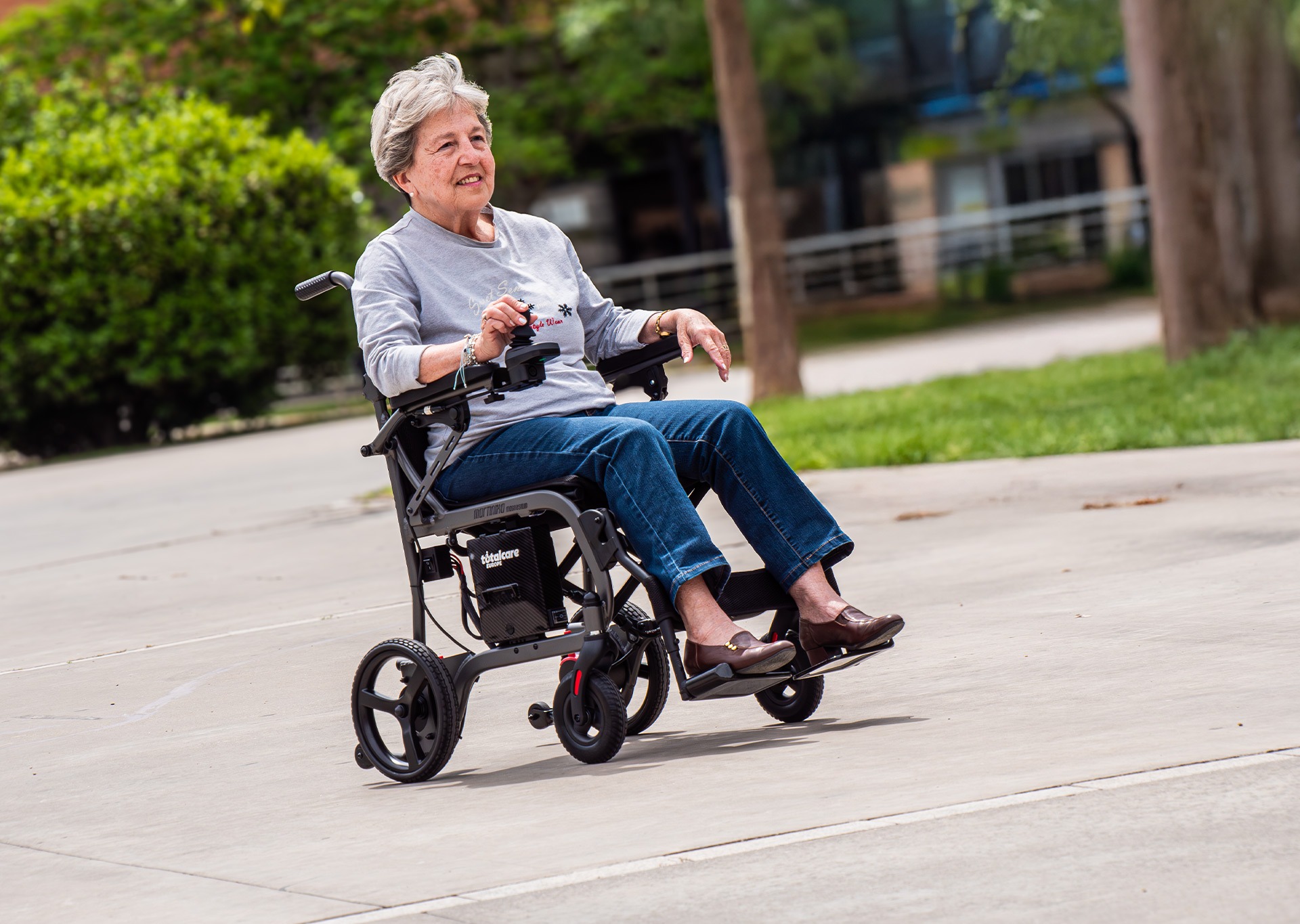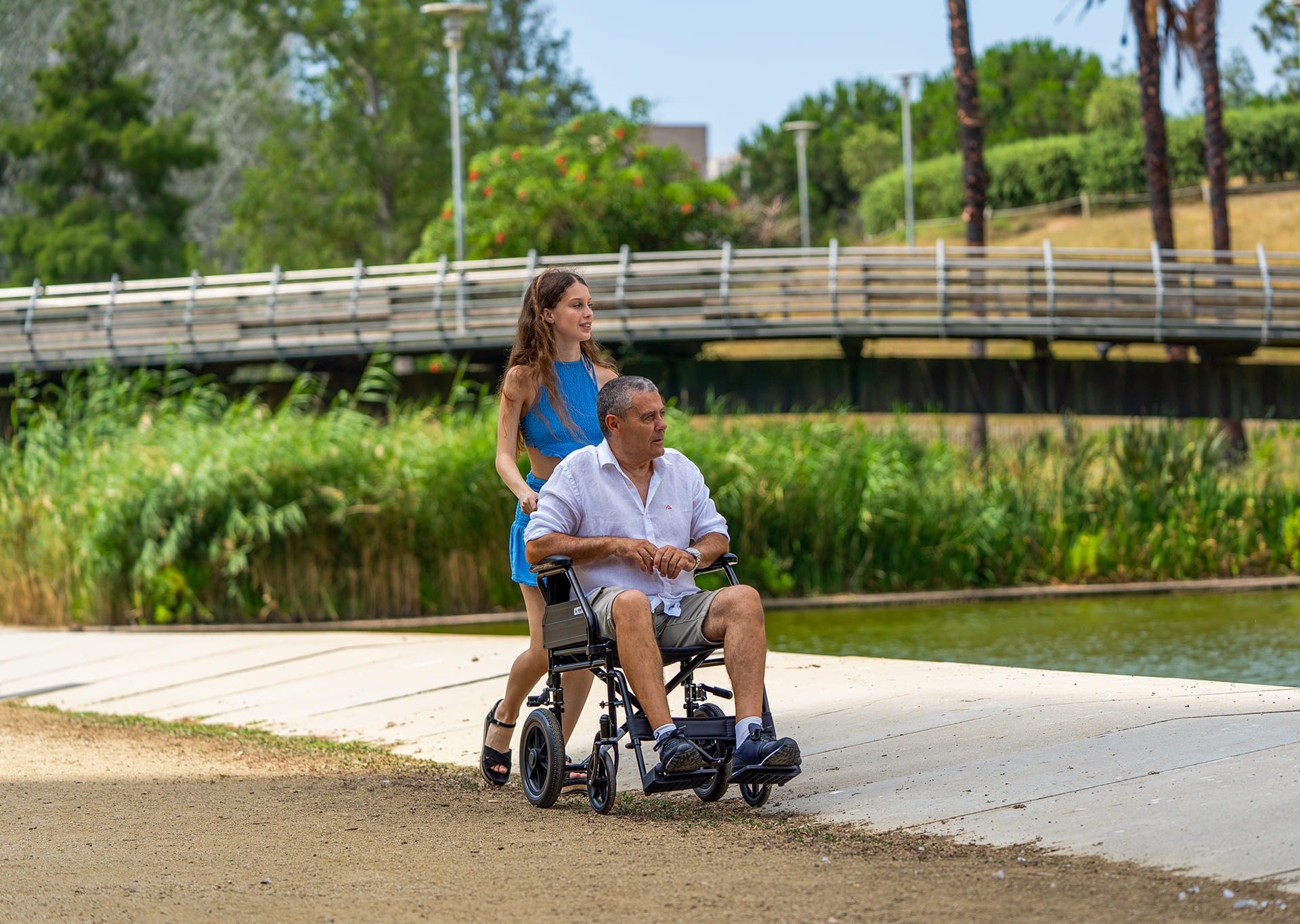
How to adapt your wheelchair for greater comfort and efficiency
A wheelchair is not just a means of mobility, but an extension of the body for those who use it daily. Therefore, personalizing and properly adjusting it can make a huge difference in terms of well-being, postural health, and autonomy. In this article, we explore different ways to adapt your wheelchair to improve its comfort and performance, prevent physical discomfort, and ensure it truly meets your needs.
- Correct adjustment of armrests and footrests
One of the first areas to adjust to achieve an ergonomic and stable posture is the arm and foot supports. Poorly positioned, they can cause muscle tension or prolonged discomfort.
- Armrests: If they are too high, they can strain the shoulders and neck; if they are low, they compromise posture and core balance. The ideal height allows for arm support without restricting movement.
- Footrests: Their function is to keep the legs at a proper angle. If they are too high, pressure on the thighs can impair circulation. If they are low, the risk of lower back fatigue and poor pelvic alignment increases.
Adjusting them correctly not only improves posture, but also reduces physical strain when using the chair for long periods.
- Choosing cushions according to your needs
Spending long periods of time sitting can put constant pressure on certain areas of the body, which can lead to discomfort or even skin lesions such as pressure ulcers. Therefore, choosing the right cushion is essential.
- Foam cushions: They are lightweight and provide a stable base. Ideal for people who require moderate support.
- Gel cushions: They distribute pressure evenly and help keep the skin cool, making them useful for sensitive skin or those at risk of ulcers.
- Air cushions: They offer a high level of pressure relief, adjusting to the user’s movements. They are recommended for people at high risk of pressure injuries.
A well-chosen cushion can make the difference between daily comfort and discomfort.
- Improved wheels for more efficient mobility
Wheels not only affect mobility, but also the effort required to move and the type of terrain you can travel on. Customizing them can significantly increase the chair’s functionality.
- Lightweight rear wheels: Facilitate propulsion and reduce fatigue, especially for active or independent users.
- Solid rubber front wheels: Ideal for urban surfaces, they prevent punctures and offer greater stability.
- Traction rings: These are placed on the wheels to improve hand grip and facilitate propulsion, especially on wet days or when the user has limited upper extremity strength.
Choosing the right type of wheel improves autonomy and adapts the chair to each user’s lifestyle.
Conclusion
Customizing a wheelchair isn’t a luxury, but a necessity for those who use it daily. Adjusting the armrests and footrests, selecting the most appropriate cushion, and upgrading the wheel system are all changes that can completely transform the mobility experience. These adaptations allow not only for greater comfort, but also a real improvement in efficiency, postural health, and quality of life. Consulting with specialized professionals can help you identify which adjustments are best suited to your individual needs and ensure your chair truly supports you in every aspect of your routine.








